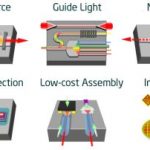You are currently viewing SemiWiki as a guest which gives you limited access to the site. To view blog comments and experience other SemiWiki features you must be a registered member. Registration is fast, simple, and absolutely free so please,
join our community today!
On Sunday evening December 6[SUP]th[/SUP] before IEDM, IMEC held the IMEC Technology Forum (ITF). The ITF was held at the Belgium ambassador’s residence, a really beautiful setting for a meeting.
The ITF began with a brief welcome by the Belgium ambassador followed by a brief introduction to IMEC. IMEC is a research institute … Read More
An indecision is actually a very bad decision. It is an implicit decision for the status quo. It is worse than an explicit decision regardless of how bad that decision turns out to be. In my experience, our indecisiveness is caused by various reasons involving trade-offs.… Read More
Stocks in the semiconductor equipment space continue to fall only this time along with the broad market. We had recently pointed out that LRCX was the last to fall among the large cap companies in the space but now the question becomes when have they fallen enough to say its over, and which stocks have more to fall……
ASML… Read More
As semiconductor professionals we all are familiar with Moore’s law. Respected Gordon Moore during year 1965-1975 observed and stated that, number of transistors in dense Integrated Circuit has doubled for approximately two years. In the present scenario, if we consider the complexity of Integrated Circuit and if we… Read More
Silicon photonics is one of the upstart “More than Moore” technologies designed to enable the next generation of high-performance devices. Photonic design is the art of moving and transforming signals in the form of photons, allowing the message to literally travel at the speed of light, and bringing the promise of significant… Read More
There were two keynotes at DAC this morning. I think the official designation of the first one was a “visionary talk” and the main difference was that it was only 15 minutes long. Vivek Singh, an Intel fellow, talked about Moore’s Law at 50: No End in Sight.
He started with a graph showing transistor speed versus… Read More
For those who may not know me, here is a brief introduction. I started in the semiconductor business when RCA was still making vacuum tubes and I wrote EDA software before there was an EDA industry. I’ve designed and sold chips and developed, sold and used EDA tools at companies as big as General Electric and as small as seven people.… Read More
We live in very interesting times, you can wear an Android watch from Samsung that uses 14 nm FinFET technology, attend the 52nd DAC conference in June to learn about EDA and IP vendors supporting FinFET, and read about research work for new devices down to 5 nm. TCAD is that critical software technology that enables the development… Read More
A year ago many eulogized the death of Moore’s Law at 28nm due to higher prices per transistor at more advanced nodes, but now that we have celebrated the 50th anniversary let’s look ahead to technology scaling and electronic systems miniaturization for the next decade. Despite our industry’s bipolar tendencies and daunting technical… Read More
In the first four installments of this series we have examined Moore’s law, described the drivers that have enabled Moore’s law and discussed the specific status and issues around DRAM and logic. In this final installment we will examine NAND Flash.… Read More



